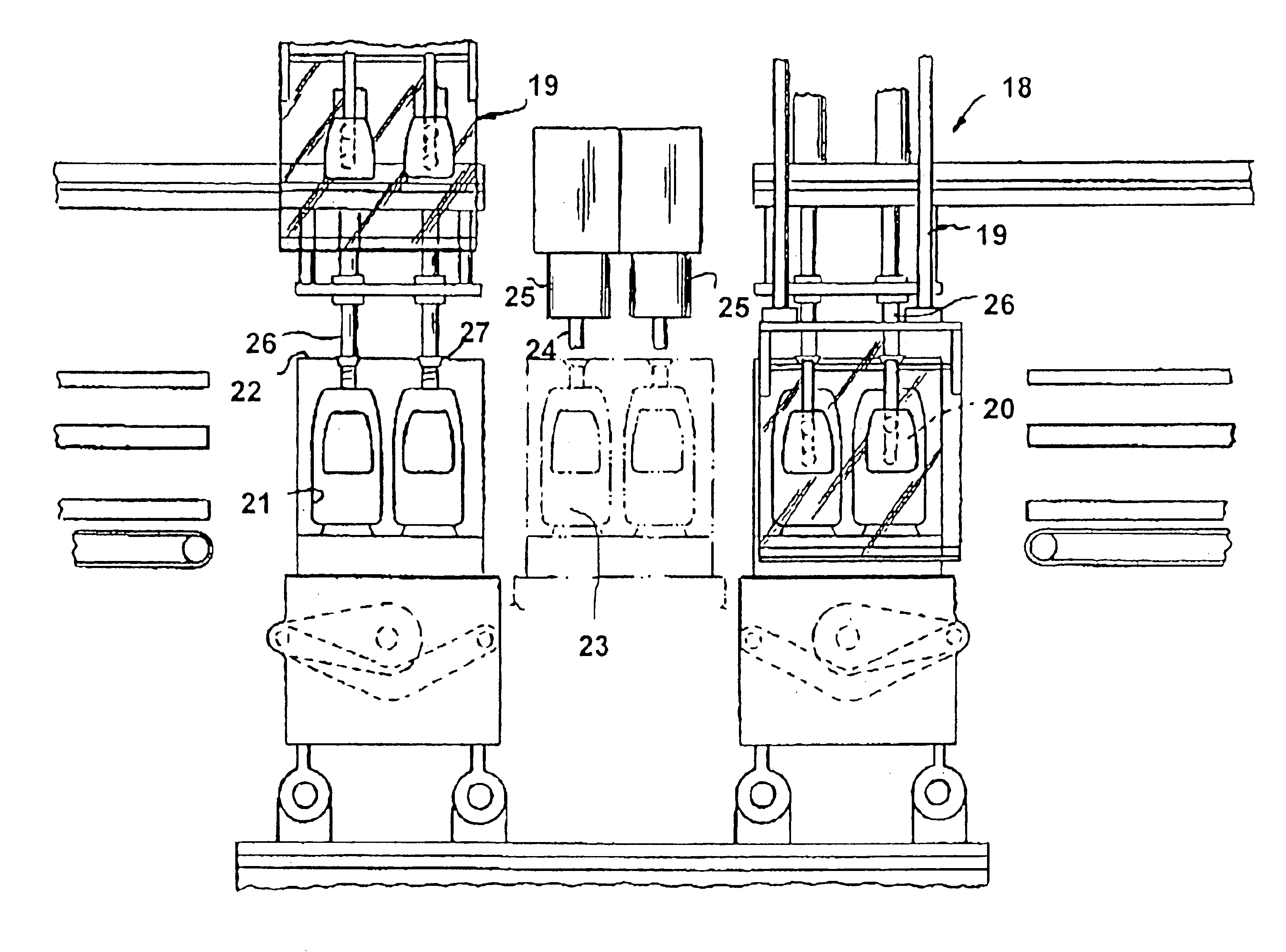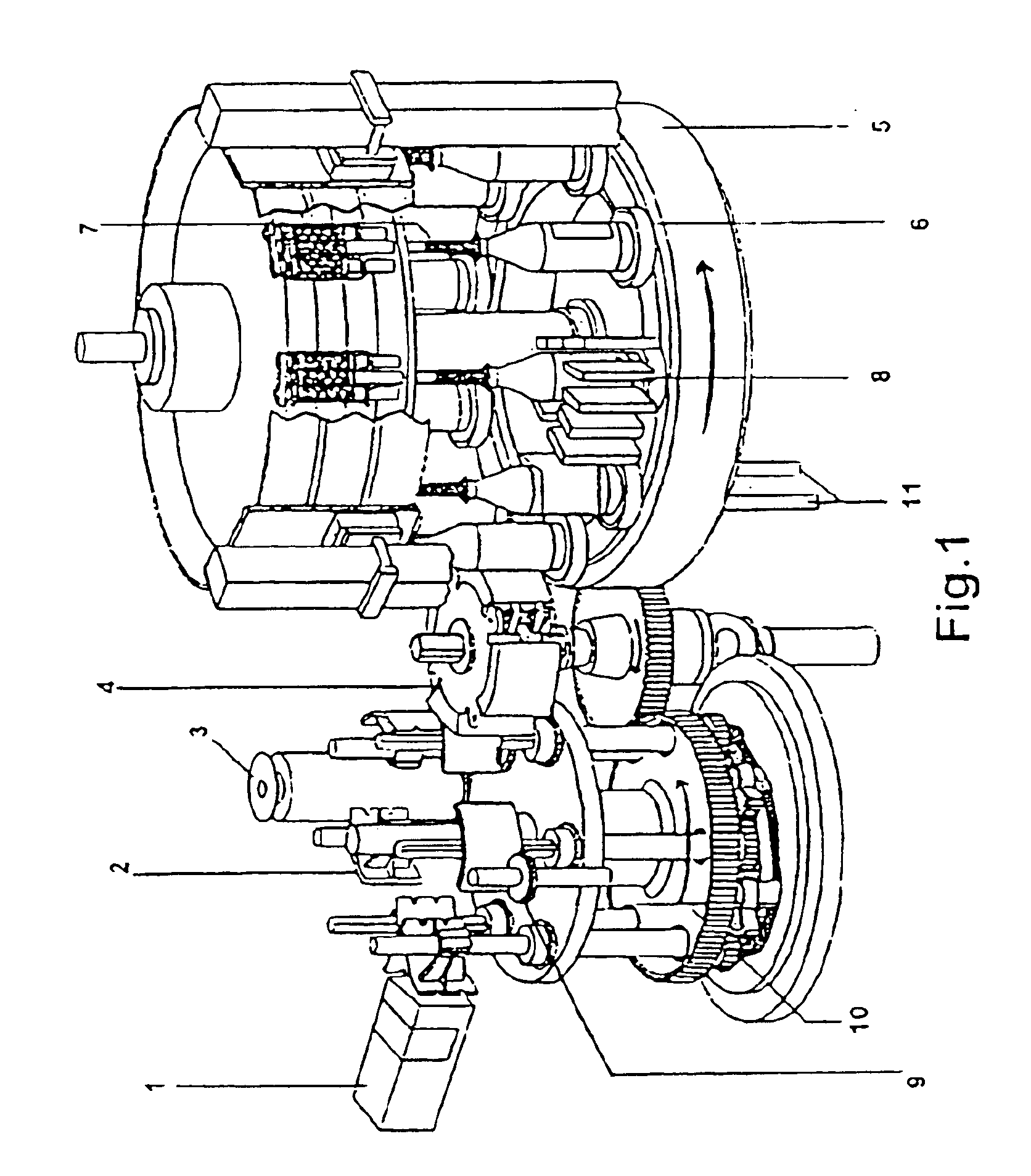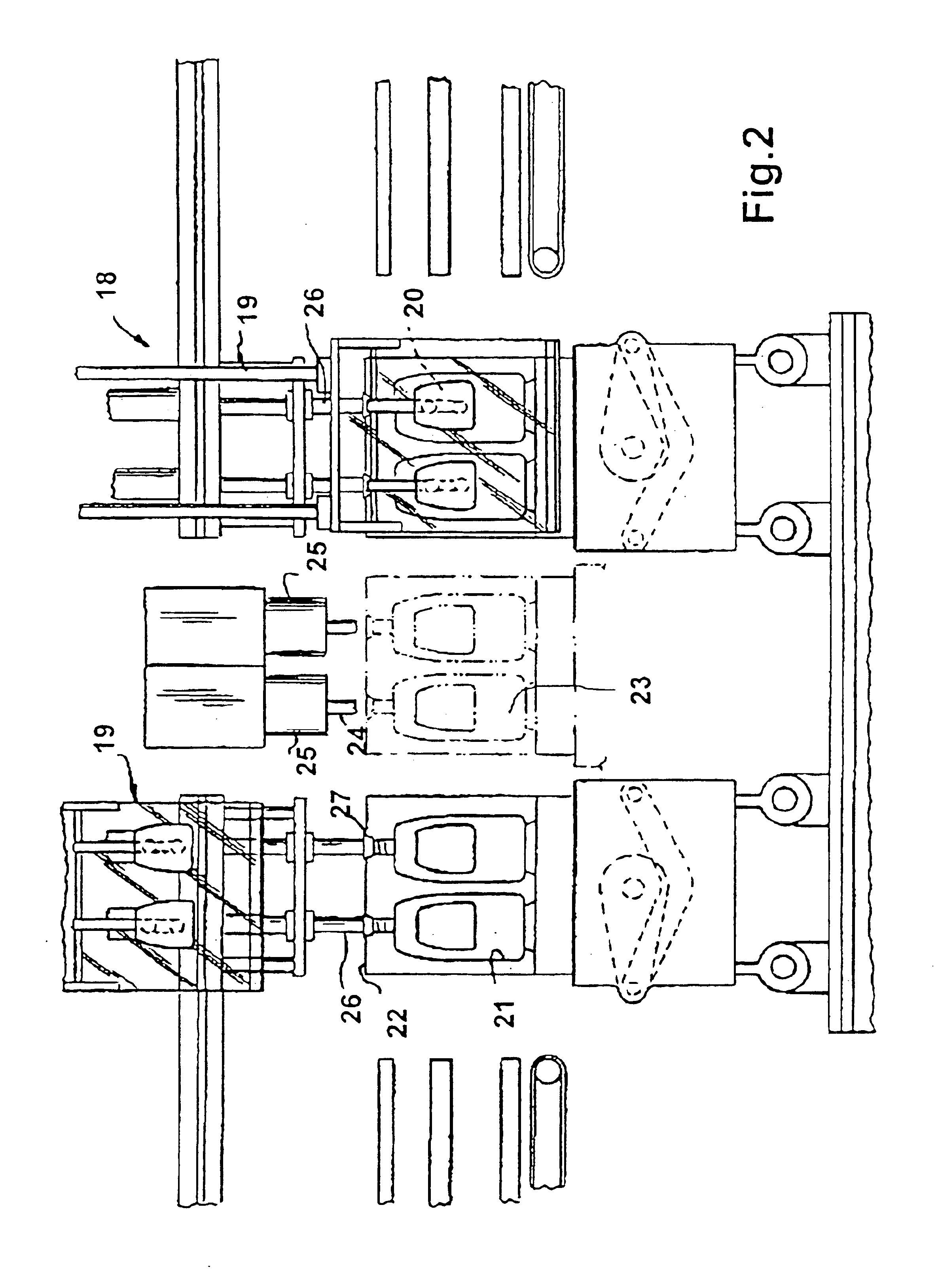Method for gluing plastic labels on hydrorepellents containers by means of labelling apparatus for water based glues
a technology of water-based glues and labeling apparatus, which is applied in the direction of labels, labelling short rigid containers, lamination, etc., can solve the problems of reducing the speed of application of conventional dry type, higher costs associated with self-adhesive plastic label apparatus, and additional costs associated with dry typ
- Summary
- Abstract
- Description
- Claims
- Application Information
AI Technical Summary
Benefits of technology
Problems solved by technology
Method used
Image
Examples
Embodiment Construction
The present invention allows for the use of machines and apparatus of the "wet type", normally adopted for the application of paper labels with water based glues, to apply plastic labels to hydrorepellent of metal, plastic or glass containers. The invention is made possible by the combination of suitable treatment of the surface of the plastic label, in order to make them receptive either of inks containing oxidising additives for a quick drying either of water based glues.
The process of the invention provides also that the water based glue suitable to stick said labels to hydrorepellent containers have specific chemical-physical characteristics within well defined ranges. The same process allows, obviously, the application of plastic labels to any container, independently from the material of which it is made, as for example cardboard or waxed cardboard, and of any shape.
According to the invention, by substituting the paper labels reservoir, with the plastic labels treated in accor...
PUM
| Property | Measurement | Unit |
|---|---|---|
| viscosity | aaaaa | aaaaa |
| pH | aaaaa | aaaaa |
| transparent | aaaaa | aaaaa |
Abstract
Description
Claims
Application Information
 Login to View More
Login to View More - R&D
- Intellectual Property
- Life Sciences
- Materials
- Tech Scout
- Unparalleled Data Quality
- Higher Quality Content
- 60% Fewer Hallucinations
Browse by: Latest US Patents, China's latest patents, Technical Efficacy Thesaurus, Application Domain, Technology Topic, Popular Technical Reports.
© 2025 PatSnap. All rights reserved.Legal|Privacy policy|Modern Slavery Act Transparency Statement|Sitemap|About US| Contact US: help@patsnap.com



